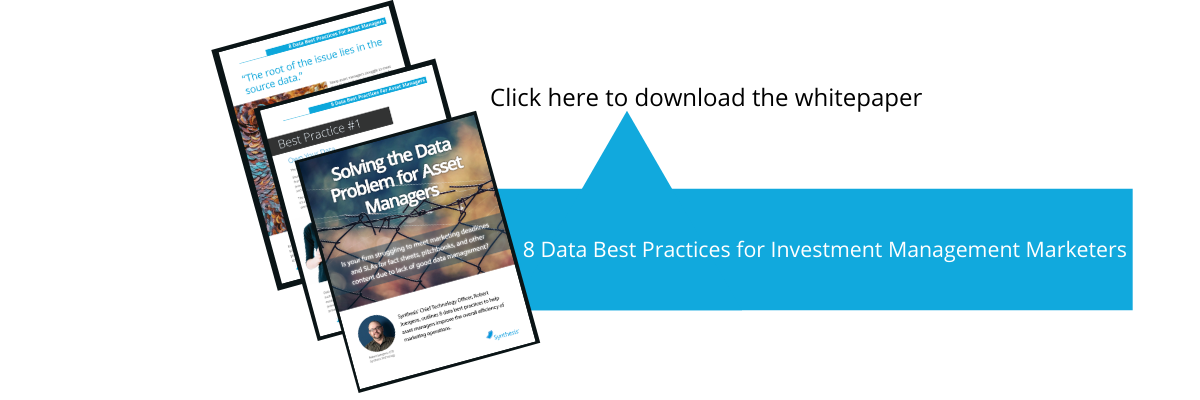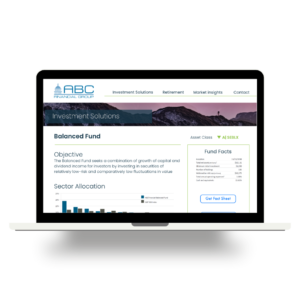5 Mistakes Asset Managers Make When Managing Disclosures

Managing disclosure language has been a critical element of Synthesis’ document automation approach for over two decades. Even with modern technology and processes, disclosures continue to be a pain point for most asset management firms. Recently, we’ve been doing research into the processes asset managers use to manage their disclosures. The goal of this research is to better understand why disclosure management continues to be problematic. Through our discussions with marketing and compliance professionals at large and small investment management firms, we’ve been digging into how firms create, edit, distribute, and retire disclosure language — and what the major issues are.
It was no surprise to find that every firm’s process looks a little different. Most of them used similar language to describe their current process, using words like ‘cumbersome’, ‘clunky’ and ‘not well-defined’. Overall, we observed some high-level commonalities:
- Disclosures are constantly changing due to requirements from internal and external sources (regulatory changes, corporate-wide updates, etc).
- Marketing is always involved in the disclosure management process at some capacity but shouldn’t “own” the language.
- Compliance must approve disclosures in content before it is distributed to the public, which can slow down the distribution process.
- The firm’s current disclosure management process as a whole is inefficient and lacks good record-keeping. This can create real risks for the firm.
The following is a list of the five biggest mistakes asset managers make when managing disclosures:
1) There isn’t one central disclosure library
Most firms are lacking one central location to store and manage disclosures. The few that do, admit that it’s disorganized. Having a central disclosure library means the firm is using a centralized tool to store all of the most recent disclosures that should be used by the firm. Excel spreadsheets are the most common of these “tools”, but we also found SharePoint sites, master MS Word files, and even custom or home-grown web applications. Even when a “tool” was in place firms reported real issues with maintenance and organization. When a disclosure library is de-centralized or disorganized, it becomes very cumbersome for content owners to find the disclosures that need to be included or updated in their content pieces.
In scenarios where there is no disclosure library, there is often chaos around the disclosure editing process. It is very helpful to the content owners to be able to know where to find current and approved disclosure materials, rather than finding a piece of paper with edits that was left on their desk, looking at last year’s document, or searching for an email thread sent weeks ago. In many cases we found that content owners are put in the position of simply making guesses about what disclosures should appear on their content, and then relying on compliance to catch problems before the content is published.
2) There’s a lack of ownership
Surprisingly, we found that more than half of the firms we talked to don’t have a designated team that truly ‘owns’ the disclosure library for the firm. ‘Owning’ disclosure means a team is responsible for collecting disclosure updates, updating the centralized disclosure library, and then distributing updates to content owners. Everyone at the firm knows to go to this team for any disclosure information. When there is not a team owning the disclosure library, finding the correct version of disclosure can be practically impossible.
When we see this ownership gap at a firm, we suggest to the compliance team that they should really consider proactively owning and managing a disclosure library. Interestingly, their first reaction to this suggestion is often negative. They see this as a new responsibility and a potential workload burden, when in fact it’s more likely to save them a great deal of labor, as well as decrease risks firm-wide.
3) Changes are not compiled and tracked adequately
Compliance gathers disclosure changes in a variety of different ways from a multitude of different sources including legal, sub-advisors, FINRA, the Fed, the SEC, and others. These changes often come through a variety of channels — email, internal discussions, staff meetings, or marked-up documents. What’s often lacking in this process is keeping track of why updates were made and who authorized the change.
We’ve heard horror stories of firms rushing to compile this information in support of a regulatory audit event. One of our clients described in detail for us how tracking disclosure changes assisted them in explaining how performance changes over time. Having this level of record-keeping was specifically beneficial during a recent regulatory audit. The consensus among firms we’ve spoken with is that the key to minimizing the pain and financial risks associated with audits is to be able to illustrate institutionalized practices that demonstrate that the firm takes seriously its responsibility to provide accurate, timely, and clear information to their investors. A lack of controls can be seen as a greater sin than is the actual event that triggered the audit. From what we’ve seen, the accuracy of disclosures is not often the origin of fines firms face, but having solid disclosures and disclosure management processes can prevent or minimize the fines.
4) The process of communicating disclosure changes is inconsistent
Compliance teams generally know their business very well and are, by and large, quite responsive to the business teams producing marketing or sales content. However, we found that the method of communicating with content creators about their materials and required disclosures can be very inconsistent. Different means of communicating apply to different creators, different reviewers, and even on different days. The most common means of communicating are by either marking up the piece of content with pen on paper, emailing suggested changes to the content owners, or making comments directly in a PDF.
Problems arise when there isn’t a uniform way of communicating these changes to content owners. If changes and feedback are coming in different ways at different times from different people, it can be tricky to compile every change and apply them correctly…and almost impossible to produce a solid audit trail. Content owners, especially at large companies, sometimes have a hard time knowing where to look to find disclosure updates due to the inconsistent method of communication. Without a uniform way to communicate changes, the process can become inefficient and error-prone.
5) Disclosure updates are made re-actively
At many asset management firms, most disclosure changes are communicated during the content production cycle, which is the most awkward and expensive time to do so. During the content review, Compliance may add new disclosure, update a disclosure or correct the formatting of disclosure… all when the document is otherwise ready to go out the door. Making changes ad-hoc during production cycles slows down production, negatively impacting the speed-to-market of your marketing content. Content can be produced more quickly and cheaper if compliance updates are advertised before the production process.
The overall theme of our findings is that, with regard to disclosures, the majority of firms operate in a reactive mode, which perpetuates a chaotic process. Most firms agree that they want to find more proactive ways to control and communicate disclosure changes, but the problem has been difficult to solve with the current set of technology and resources available to them.
One of the solution experts at Synthesis said, “It’s a difficult problem because disclosures impact every piece of content. The question is, how do you reuse a small amount of material in a lot of different contexts simultaneously? When you have all of this contextual stuff going on, you need a tool that’s dependable and has the flexibility of control without being overwhelming.”
Synthesis Technology tackles these disclosure management challenges head-on. Our goal is to provide asset managers with a great solution to improve the way disclosures are managed. Thus, they improve velocity in the marketing and distribution process while minimizing risk.
How is your firm handling disclosures? We’d love to talk about it!
Here are some related resources that might interest you:







 Compare the Top 3 Finserv Content Automation Vendors [White paper]
Compare the Top 3 Finserv Content Automation Vendors [White paper] Create Pitchbooks the Drive Sales [White paper]
Create Pitchbooks the Drive Sales [White paper] Build vs. Buy: Should Your Financial Services Firm Outsource or Insource Marketing Technology? [White paper]
Build vs. Buy: Should Your Financial Services Firm Outsource or Insource Marketing Technology? [White paper]  10 Tips for Rebranding your Fund Marketing Documents [White paper]
10 Tips for Rebranding your Fund Marketing Documents [White paper]




